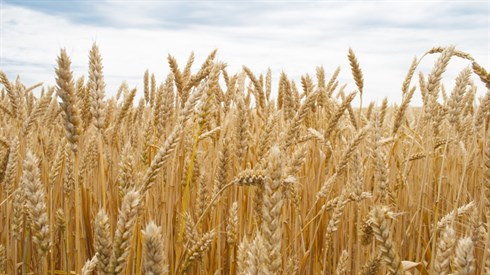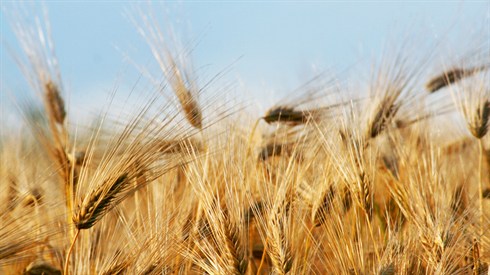- Shabbat and Holidays
- Yom Tov
428
"I have been told that there is a way to cook more than you need on Yom Tov in order to have plenty of leftovers for Chol Hamo’ed or for after Yom Tov. How does that work?"
Question #2: Muktzah Grill
"I own a portable, charcoal-fired grill. Is it muktzah on Yom Tov?"
Question #3: Fireplace on Yom Tov?
"May I use my fireplace on Yom Tov?"
Answer:
When discussing the laws of Yom Tov, the Torah teaches kol melacha lo yei’aseh bahem, ach asher yei’acheil lechol nefesh hu levado yei’aseh lachem, "No work should be performed on these days; however, that which is eaten by everyone (kol nefesh), only that may be prepared for yourselves" (Shemos 12:16). We see from the posuk that although most melachos are forbidden on Yom Tov, cooking and most other food preparations are permitted. Yet, we also see that this posuk does not provide a blanket approval for all food preparations, but limits it to that which is eaten by everyone (kol nefesh), and furthermore permits only performing melacha "for yourselves" as the beneficiaries. We will see, shortly, what these pesukim include and exclude.
This article is not a full review of the rules of Yom Tov observance; rather, it focuses on some details of the laws of preparing food on Yom Tov, with which many people are unfamiliar. As always, this article is not meant to provide halachic guidance for our readers – that is the role of the individual’s rav or posek. The purpose of this article is to provide background and to explain concepts.
Kol nefesh
The posuk permits cooking and food preparation. Certain other activities are also permitted, even though they are not food preparatory, such as carrying, but these activities are permitted only when there is a Yom Tov purpose or benefit (Tosafos, Beitzah 12a). Nevertheless, activities such as burning incense are forbidden on Yom Tov, because the Torah permits only that which kol nefesh, "everyone," appreciates; not everyone appreciates the smell of burning incense (Mishnah, Beitzah 22b; Kesubos 7a; Shulchan Aruch, Orach Chayim 511:4). On the other hand, it is permitted to add a pleasant fragrance to food that will be eaten, since this is considered tzorach ochel nefesh, a food purpose (Shulchan Aruch, Orach Chayim 511:4 and Mishnah Berurah ad locum).
Most authorities prohibit smoking on Yom Tov, because many people do not appreciate its "benefits." Even in earlier generations, when the dangers of smoking tobacco were not known, there was a large discussion among halachic authorities whether smoking is permitted on Yom Tov, because of the concern that it does not qualify as something that kol nefesh enjoys (Magen Avraham 514:4, Pri Megadim and Chasam Sofer ad locum; Mor Uketziyah, 511; Pnei Yehoshua, Shabbos 39b s.v. Ve’omer R"I; Korban Nesanel, Beitzah 2:22:10 et al.)
Cooking that is prohibited
Even cooking and other food preparations are not always permitted on Yom Tov. For example, it is permitted to cook and prepare food on Yom Tov only when that food will be served on Yom Tov, but it is forbidden to cook on Yom Tov for Chol Hamo’ed, on the first day of Yom Tov for the second day, or on either day of Yom Tov for after the holiday is over. Even cooking on a Yom Tov that falls on a Friday for Shabbos is permitted only when one first makes an eruv tavshillin, a topic for a different time. Similarly, preparing the meals of the second night of Yom Tov may not take place on the first day of Yom Tov. For this reason, a common custom in Eastern Europe was to delay maariv on the second night of Yom Tov in order to discourage beginning the meal preparations before the first day of Yom Tov was over. (Remember that, in those days, preparing the meal before Yom Tov and freezing or refrigerating it so that it could be warmed up was not an option.) The davening was delayed intentionally, so that by the time the men returned home from shul, the women would have had sufficient time after the first day of Yom Tov had ended to prepare the meal.
Cooking on Yom Tov for a non-Jew is prohibited (Shulchan Aruch, Orach Chayim 518:2). Furthermore, Chazal forbade inviting a non-Jew for a Yom Tov meal, out of concern that a Jew might cook specifically for him on Yom Tov (Beitzah 21b). It is permitted to invite non-Jewish domestic help for a Yom Tov meal, since you would not prepare for them a special dish (Rosh; Shulchan Aruch, Orach Chayim 512:1). However, you may not cook for them on Yom Tov.
Similarly, it is forbidden to cook or do other melacha on Yom Tov for an animal. Thus, although it is permitted to mix baby cereal on Yom Tov, even in a way that is prohibited on Shabbos because of the melacha of losh, kneading, this can be done on Yom Tov only for a Jewish child. To prepare this product for a non-Jew or for a pet is not permitted on Yom Tov, since this involves a melacha activity. Similar to cooking and other food preparatory melachos, losh is permitted on Yom Tov, but only to provide food for someone Jewish.
Plan-overs
At this point, we can begin discussing the answer to our opening question: "I have been told that there is a way to cook more than you need on Yom Tov in order to have plenty of leftovers for Chol Hamo’ed or for after Yom Tov. How does that work?"
Adding more
One type of cooking that is permitted on Yom Tov is called marbeh be’shiurim, literally increasing the quantities, which means that, while preparing food on Yom Tov, it is permitted to include a greater quantity while cooking, provided no additional melacha act is performed. For example, if you need to heat a small amount of water for a cup of tea, you may place a large pot of water on the fire, since only one act of heating water -- placing a pot on the fire -- is being performed.
However, this is prohibited if an additional melacha action is performed. For example, if the pot is already on the fire, you may not add extra water to it, since this involves a new melacha activity.
Here are other examples. If you are making a cholent or cooking soup, you may add into the pot greater quantities of meat, beans or other ingredients than you will need for your Yom Tov meal before it is placed on the stove, because you place the entire pot onto the fire at one time. You may fill a pot with meat on the first day of Yom Tov, even though you need only one piece for the first day.
However, it is prohibited to prepare individual units of a food item, knowing that you are preparing more than can possibly be eaten on Yom Tov. For this reason, you may not fry more schnitzel or similar items than you will possibly need for a Yom Tov meal, since these involve separate melacha actions. Similarly, it is forbidden to bake more than necessary for the day (Beitzah 17a). Adding water or meat before putting the pot on the fire simply increases the quantity cooked, but does not increase the number of melacha acts. Shaping each loaf or roll is done separately, which is forbidden on Yom Tov as unnecessary work.
Why is this permitted?
Why is it permitted to cook extra on Yom Tov by use of marbeh be’shiurim? We would think that cooking extra on Yom Tov is forbidden, just as in a situation of pikuach nefesh, when it is forbidden to cook more than what is necessary for the needs of the ill person. So, why is it permitted to cook extra on Yom Tov, as long as no extra melacha actions are performed?
The Ran (Beitzah 9b in Rif pages, s.v. Umiha) explains that there is a qualitative difference between the performance of melacha actions on Shabbos (or Yom Tov) to save someone’s life, versus cooking on Yom Tov. Although saving lives is a huge mitzvah, even if it involves desecrating Shabbos, the act performed is still a melacha on Shabbos. The Torah permitted this melacha, because saving lives is more important.
On the other hand, when the Torah defined prohibited activities on Yom Tov, it defined the prohibition as melachos that are not food preparatory. Preparing food on Yom Tov involves no melacha activity whatsoever, and is as permitted on Yom Tov as it is to set the table on Shabbos. Since no melacha activity is performed, there is nothing wrong with adding more to cook in the course of preparing the Yom Tov meal, provided that no additional actions are done.
Muktzah on Yom Tov
In general, the laws of muktzah apply on Yom Tov, although there are many situations in which the laws are different from the way these laws are applied on Shabbos. First we will review the basic categories of muktzah, so that I can explain how the rules are different on Yom Tov.
There are three levels of muktzah:
A Kli she’me’lachto leheter is an item whose primary use is permitted, such as a chair or pillow. Such an item can be moved on Shabbos or Yom Tov in order to accomplish one of three purposes:
(1) To use it.
(2) To use the place where it is located.
(3) To avoid it becoming stolen, lost or damaged.
However, it may not be moved without any reason (Shabbos 123b-124a; Shulchan Aruch, Orach Chayim 308:4).
Therefore, if you left a pillow on your open porch and you are afraid that it will rain, you can bring the pillow indoors. You are also permitted to use it for a pillow fight, assuming the other person is agreeable to the pillow fight. (If they are not, it would be prohibited to use it for this purpose even on a weekday.) However, it is not permitted to move a pillow without any purpose at all.
B Kli she’me’lachto le’issur is an item whose primary use is forbidden, such as a hammer or a needle, although you might have a permitted reason to use it. An item in this category may be moved to accomplish one of two purposes:
(1) To use it. If there is a need to use it for a purpose that is permitted, and there is no kli she’me’lachto leheter readily available to do the job (Shabbos 124a). For example, it is permitted to use a hammer on Shabbos or Yom Tov to open a coconut, or a needle to remove a splinter. (In the latter case, you should try to avoid causing bleeding.)
(2) To use the place where it is located.
Under normal circumstances, it may not be moved for any other purpose. It may not be moved when your reason to move it is concern that it may be stolen, damaged or lost.
C Completely muktzah
These are items that may not be moved for most purposes on Shabbos or Yom Tov.
Differences between Yom Tov and Shabbos
Because it is permitted to cook and prepare food on Yom Tov, the definitions of what fits into the above categories on Yom Tov are not necessarily the same as they are on Shabbos. For example, utensils used to cook are usually categorized as kli she’me’lachto le’isur on Shabbos and, therefore, can be moved only if you have a Shabbos use for them, or you need their place for something else. However, these same items are kli she’me’lachto leheter on Yom Tov, since it is permitted to cook with them, and therefore they can be moved on Yom Tov, even if your only reason to move them is that you are afraid that they might become damaged.
Here is another example of a type of item that is muktzah on Shabbos, but not necessarily so on Yom Tov. Charcoal, pieces of wood and other items that can be used as fuel are completely muktzah, because they have no use on Shabbos. However, on Yom Tov, when cooking is permitted, these types of fuel may not be muktzah, as I will explain.
Lighting candles
A candle is another example of an item that is not muktzah on Yom Tov, although it is muktzah on Shabbos. Although it is prohibited to strike a match on Yom Tov (see below), it is permitted to kindle a candle.
Lighting a candle that has no purpose is prohibited. But it is permitted to light a candle to put on the table, even if its illumination is not noticeable, since this enhances the honor of Yom Tov (Shulchan Aruch, Orach Chayim 514:5). Similarly, it is permitted to kindle a candle in shul, even in the daytime, since it enhances the honor of Yom Tov (Shulchan Aruch, Orach Chayim 514:5 and Mishnah Berurah 31).
Moving muktzah to cook on Yom Tov
There is another leniency that applies on Yom Tov that does not apply on Shabbos. It is permitted to move a muktzah item on Yom Tov in order to enable the preparation of food or to enhance simchas Yom Tov (Rema, Orach Chayim 509:6 and 518:3). For example, a muktzah item was left or placed on top of a stove or a counter that you need to prepare food. You are permitted to pick up the muktzah item with your hands and move it in order to cook and prepare food (Mishnah Berurah 509:31; 518:23). Since, on Yom Tov, it is permitted to cook and prepare food, if the prohibition of muktzah would disturb the ability to cook or otherwise prepare food, it is permitted to move the muktzah item.
New fire
Creating a new fire on Yom Tov is forbidden (Mishnah Beitzah 33a). Therefore, it is prohibited to create a flame by using a flint, rubbing stones together, or striking a match. Similarly, it is prohibited on Yom Tov to light the stove by using the electric igniter.
Muktzah Grill
At this point, we are in a position to address the second of our opening questions: "I own a portable, charcoal-fired grill. Is it muktzah on Yom Tov?" The answer is that, even if you have no intention to use the grill, on Yom Tov it has the status of kli she’me’lachto leheter. As a result, not only can it be moved if you need the place where it is currently located for some other item or purpose, but it can be moved even when the only concern is that it will get damaged or stolen.
Fireplaces on Yom Tov
Many people are surprised to discover that it is permitted to use a fireplace on Yom Tov, either for cooking or warmth, and that it is also permitted to barbecue on Yom Tov. As we noted above, the fireplace or grill must be kindled from an existent flame – but once it is kindled, you may add lighter fluid, charcoal or wood to the fire as needed. It is even permitted to take a burning piece of wood from one side of the fire and move it to another side, to have the fire burn stronger (Rema, Orach Chayim 502:2). The Rema rules that we are not concerned about extinguishing the flame on this piece of wood, because your intent is to make the fire burn better. It is permitted to place food on the grill or fireplace, even though you extinguish the flame a bit with the food or with the drippings. If you add wood to the fire, it must be wood that is assumed to be used for adding to a fireplace or wood-burning stove, as opposed to adding something such as construction lumber, which is not permitted because it is mukztah.
It is not permitted to split the wood, if you can use it without doing do (Shulchan Aruch, Orach Chayim 501:2). This is prohibited because this tedious work is unnecessary. There are many detailed halachos regarding use of fallen wood on Yom Tov (Shulchan Aruch, Orach Chayim 501:3-6), and the simplest solution is to use only wood that you have set aside from before Yom Tov for this purpose.
Conclusion
The Torah refers to the Yomim Tovim as mo’ed. Just as the word ohel mo’ed refers to the tent in the desert which served as a meeting place between Hashem and the Jewish people, so, too, a mo’ed is a meeting time between Hashem and the Jewish people (Hirsch, Vayikra 23:3 and Horeb). Although on Shabbos we are to refrain from all melacha activity, on Yom Tov the Torah permitted melacha activity that enhances the celebration of the Yom Tov as a mo’ed. Permitting the preparations of delicious, freshly prepared meals allows an even greater celebration of the festivities of the Yom Tov, as we celebrate our unique relationship with Hashem.
This Shiur is published also at Rabbi Kaganof's site

Would You Like One Day or Two?
Rabbi Yirmiyohu Kaganoff | Sivan 1 5779

Mistakes in Kiddush of Yom Tov that Falls on Shabbat
Rabbi Daniel Mann | Nissan 10 5782

Eruv Tavshillin
Rabbi Yirmiyohu Kaganoff | Nissan 12 5782

Eruv Tavshillin when Yom Tov begins on Friday!
Rabbi Yirmiyohu Kaganoff | Iyar 20 5783

Responsible Jews
Rabbi Yirmiyohu Kaganoff | Elul 23 5777

“Ba’omer” or “La’omer”?
Rabbi Daniel Mann | Iyar 4 5777

Interesting Chol Hamoed Questions
Rabbi Yirmiyohu Kaganoff | Tishrei 12 5781

Making Our Days Count
A Review of the Halachos of Sefiras HaOmer
Rabbi Yirmiyohu Kaganoff
Daf Yomi Makkot Daf 10
R' Eli Stefansky | 20 Nisan 5785
Daf Yomi Makkot Daf 8
R' Eli Stefansky | 18 Nisan 5785








